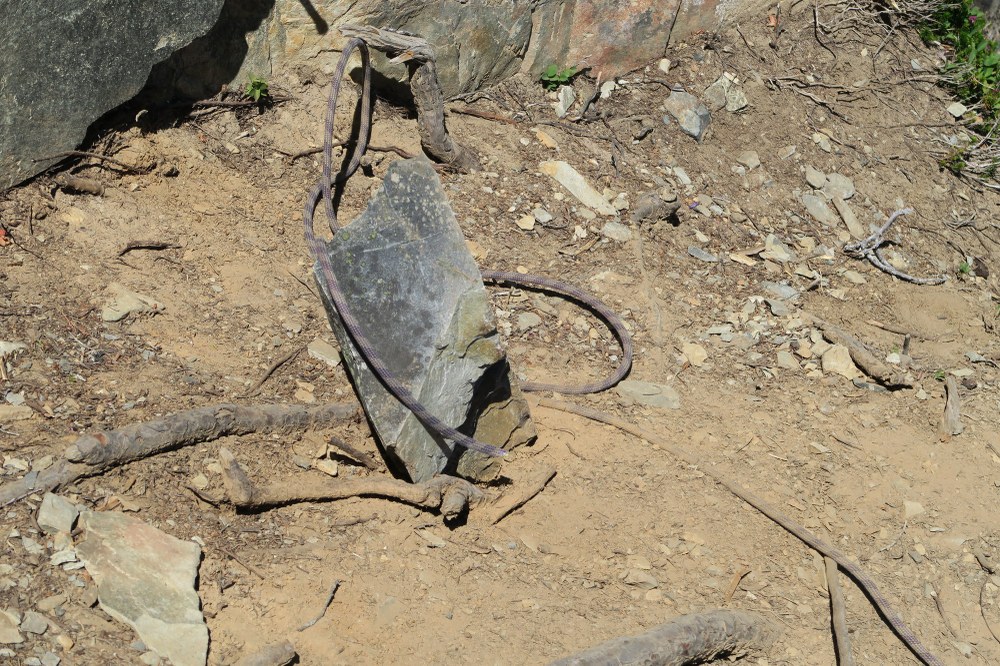
Near Miss Report: July 6, The Tooth (Snoqualmie)
A climber on rappel dislodged a piece of rock the size of a small computer or a VCR. It fell 10-15' and pinched one strand of the rappel rope against a thin ledge on the second to last rappel on the descent, severing it clean through.
A climb leader and a student were secured to the next anchor at the bottom of the rappel and spotted the flaccid tail at the bottom of the rappel and the cut end below the rappeler; they alerted the rappeler to stop immediately. He stopped 6-8 feet above the cut end of the strand and about another 8-10 feet above the ledge where they were waiting. Without the climbers below notifying the rappeler, he might have kept rappelling without looking at his rope and fallen all the way to the ground.
He was able to knot the two strands together below his autoblock as a stopper, climb back up to a ledge just above his location (bringing his belay device and autoblock up as he went). The remaining two climbers rappelled down to the ledge and anchored to a cordalette around a sturdy tree, eventually scrambling third-class terrain down to the rappel anchor below where the climb leader and student had first spotted the severed rope.
Everyone made it down safely thanks to quick action and clear communication from the leaders.
Lessons Learned
The biggest lesson from this near-miss is the importance of maintaining situational awareness and a team approach to safety. Had the climbers below not been so alert and communicative, this near miss could have been a catastrophe.
This was actually two near-misses: The party at the ledge below the rockfall was at risk of getting hit by a large rock had it not stopped above them, and they also averted a catastrophe by alerting the climber about the severed rope.
In the event of rockfall below you on a rappel:
- Assess the situation – are you still at risk of further rockfall, or are you at risk of endangering your partners below if you continue?
- Engage your autoblock and pull up both ends of the rope to closely inspect them. Inspect the ropes below (both visually and manually) and enlist the aid of parties with a better view, if any.
- Never assume that you’re safe because you have tied knots at the ends of the ropes. Having knots tied in the ends would not help if the rope is severed above those knots.
Add a comment
Log in to add comments.Thank your for sharing this near-miss.
It is unclear if this rappeler observed, or would have observed, the damage without the alerting cry of his watchful companions. If not it could have been disastrous.
It is pretty intuitive for an experienced rappeler to eyeball the rope strands below them both to stay on route and to assure the strands are going to feed freely into the device and would have picked up on this. Not sure our new climbers are as watchful.
This incident is one more reason to use an autoblock. With an extended rappel, the application of the autoblock is much quicker (seconds to clip prewrapped autoblock to belay loop) than it was with the old leg loop attachment method. With the pre-rig and belay loop attachment, there is no longer a time saving justification for not using one. It actually saves time, and hassle, when threading strands into device.
In related circumstances, without the autoblock, there might not have been enough remaining rope below the device to stop and secure the rappeler had this happened on a near-free, or free hanging rappel. Under the stress a climber might not think of, or be able to, one-handedly add a prusik, or tie a knot in the strands below the device.
 Steve Smith
Steve Smith